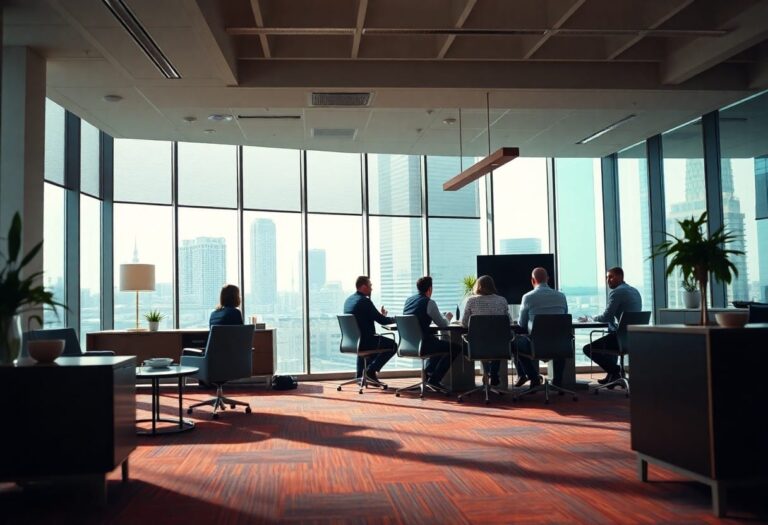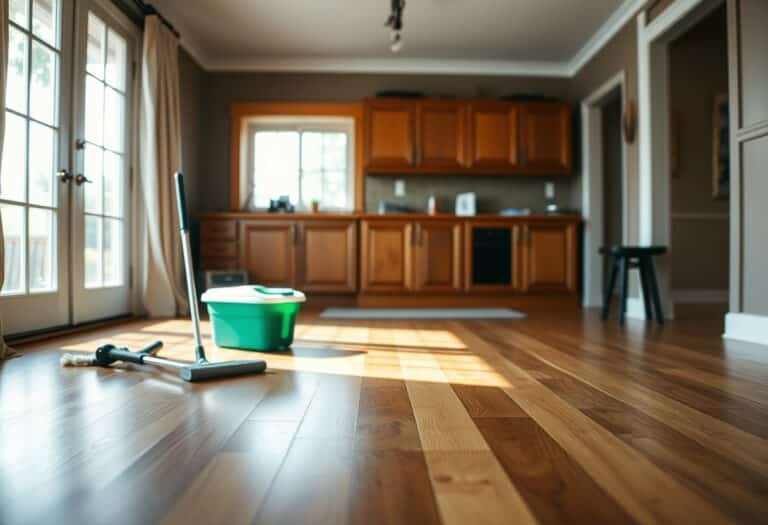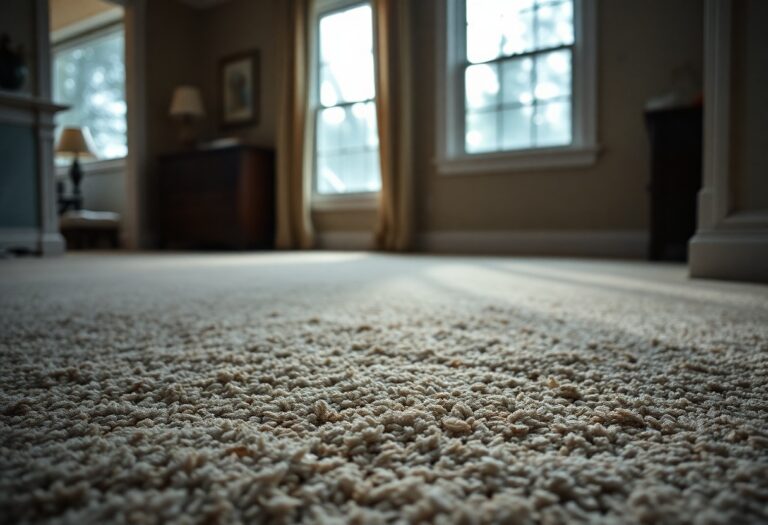Cincinnati businesses face unique challenges when choosing the right commercial flooring. To ensure you make the best choice for durability, maintenance, and aesthetic appeal, you need to evaluate several factors. Consider the specific needs of your space, such as the type of foot traffic, the environmental conditions, and the level of care your flooring will require. Understanding these elements will help you select a solution that not only enhances the appearance of your establishment but also stands up to daily wear and tear.
Key Takeaways:
- Consider the specific needs of your business, including foot traffic levels, industry type, and maintenance requirements when selecting flooring.
- Evaluate aesthetic preferences and how flooring choices align with your brand identity to enhance the overall appearance of your space.
- Look into the durability and cost-effectiveness of different flooring materials to ensure you make a long-term investment that fits your budget.
Analyzing the Demand: Understanding Your Business Needs
Understanding your business needs is fundamental in selecting the appropriate flooring. Analyze factors like customer traffic patterns, operational activities, and specific functional requirements that your space demands. Each commercial setting has distinct characteristics that can guide your choice in flooring options, ensuring both aesthetics and practicality align with your operational goals.
Identifying Traffic Flow and Footfall Patterns
Observe how customers navigate your space to gauge traffic flow and footfall patterns. High-traffic areas, such as entrances and checkouts, require materials that can withstand constant use. For example, retail stores may benefit from durable laminates or vinyl, while restaurants might prioritize slip-resistant surfaces that can handle spills. Assessing this flow will inform your decision and enhance longevity.
Evaluating Activities and Functional Requirements
Each business type has unique activities that require tailored flooring solutions. For instance, a gym needs shock-absorbing surfaces to mitigate injuries, while a medical facility must emphasize sanitation and easy maintenance. Consider the specific daily operations within your environment, as understanding these functional requirements allows you to select a flooring material that can withstand the demands of your business while providing a safe and comfortable experience for both employees and customers.
In more detail, if your business involves heavy machinery or frequent movement of goods, you’ll require flooring that minimizes wear and tear, such as polished concrete or heavy-duty vinyl. Conversely, spaces that host events or customer interactions may benefit from softer materials that promote comfort and noise reduction, like carpet tiles or hardwood. Schools, on the other hand, might require flooring solutions that are not only easy to clean but also provide a safe, non-slip surface for students. Noticing how your business operates daily directly influences your flooring choice, leading to smarter investments that cater to your specific operational dynamics.
Budgeting Wisely: The True Cost of Commercial Flooring
Determining the right commercial flooring requires a thorough understanding of your budget. Often, businesses underestimate the true cost of flooring by focusing solely on initial purchase prices. Looking beyond the upfront expenses will lead you to a more informed decision. Evaluate not just what you pay now, but also the potential savings or expenses involved over the lifespan of the flooring.
Initial Expenditure vs. Long-term Investment
The price tag on different flooring options can vary significantly. For instance, while vinyl may have a lower initial cost, high-quality hardwood could deliver greater long-term value. A careful analysis of your budget should include a balance between what you’re willing to invest today and how much you stand to gain through durability and maintenance savings down the road.
Maintenance Costs and Lifecycle Analysis
Maintenance expenses often impact your overall flooring budget more than the initial investment. For example, carpet may require regular deep cleaning, while laminate could need occasional polishing. By understanding the anticipated lifecycle costs, you can strategically choose a flooring option that aligns with your financial strategy and business operations.
Considering long-term upkeep is imperative as it not only affects your operational budget but also impacts your facility’s appearance and safety. For example, a flooring material with a longer life expectancy, like polished concrete, may have a higher upfront cost but can reduce maintenance expenses significantly over time due to its durability. Additionally, factoring in how often you may need to replace or repair worn flooring can reveal significant savings or losses in your investment choice. Regular assessments of your flooring’s condition will allow you to adapt your maintenance approach, ensuring performance and aesthetic appeal coincide with your business goals.
Aesthetic Appeal: The Role of Design in Commercial Spaces
A well-designed commercial space can significantly influence customer experience and employee morale. Your flooring choice contributes not only to functionality but also to the overall aesthetics of your environment. Integrating attractive flooring solutions can help convey the personality and values of your business, making a lasting impact on everyone who steps through your doors. A cohesive design approach promotes brand identity while ensuring that the space feels inviting and professional.
Aligning Flooring Choices with Brand Identity
Selecting flooring that resonates with your brand identity is necessary for creating a cohesive image. From retail stores to corporate offices, your flooring can reflect your company’s ethos, values, and target audience. Whether you prefer luxurious carpets for a high-end boutique or durable vinyl for a family-friendly restaurant, the materials and styles you choose should enhance and support your brand messaging.
Color and Texture: Creating the Right Atmosphere
The choice of color and texture in your flooring can dramatically affect the atmosphere of your commercial space. Warm colors may instill a welcoming vibe, while cooler tones often project a sense of professionalism. Textures can also contribute significantly; for instance, matte finishes might evoke a sense of understated elegance, while glossy surfaces can add dynamism and excitement. Selecting the right combination can enhance customer experiences and even influence purchasing decisions.
Utilizing a well-thought-out color palette helps establish emotional connections with your customers. Studies show that specific colors can trigger different feelings; for instance, blue often creates a sense of tranquility, while red can evoke energy and urgency. Textures can further elevate this experience—a plush carpet may encourage customers to linger, while smooth, polished tiles can make a space feel spacious and clean. By intentionally choosing colors and textures, you can sculpt an atmosphere that aligns with your business goals and resonates with your clientele, promoting not only comfort but also productivity.
Performance Factors: Durability and Safety Essentials
Your choice of commercial flooring should prioritize both durability and safety. A reliable flooring solution needs to withstand the daily wear and tear that comes with high foot traffic, while also providing a slip-resistant surface to protect employees and customers. Evaluate the balance between aesthetics and functionality, as the right combination will enhance both the atmosphere and safety of your workplace. The strength and resilience of the materials are paramount in creating a long-lasting investment.
- Durability against wear and tear
- Safety compliance standards
- Slip resistance for user safety
Assessing Material Strength Against Wear and Tear
Durability is a non-negotiable aspect when selecting flooring options. Different materials exhibit varying degrees of strength; for instance, vinyl and laminate offer good resilience, while materials like tile and carpet might require more frequent replacement. Analyzing the expected traffic and specific usage of the space is crucial to ensure that the flooring remains functional and aesthetically pleasing over time.
Safety Standards: Slip Resistance and Compliance
Flooring materials must meet specific safety standards to mitigate the risk of slips and falls. Non-slip surfaces are important for businesses that cater to the public, as the likelihood of accidents increases in high-traffic areas or environments where spills may occur. The slip-resistance rating is a key metric to consider, as it helps ensure compliance with safety regulations. Surfaces that achieve a minimum coefficient of friction will significantly enhance safety.
Investing in flooring that adheres to safety standards can prevent accidents and liabilities. Many commercial spaces require flooring materials to meet local or national safety codes outlined by organizations like the Occupational Safety and Health Administration (OSHA). Consider options that have a proven track record of compliance, such as textured vinyl or rubber flooring, which provide superior slip resistance compared to smoother alternatives. Ensuring that your flooring solution combines both style and safety can safeguard your business while creating a welcoming environment for your customers and employees. The long-term benefits far outweigh the initial cost of choosing compliant flooring materials.
Environmental Considerations: Sustainable Options for Flooring
In today’s environmentally conscious business landscape, selecting sustainable flooring options can positively impact your brand image and contribute to a healthier planet. Sustainable flooring choices are designed to minimize environmental harm while providing durability and aesthetic appeal. By prioritizing eco-friendly products, you can enhance your business’s sustainability efforts while ensuring a quality flooring solution that aligns with your corporate values.
Eco-friendly Materials and Certifications
Opting for flooring made from recycled materials or sourced from sustainable forests ensures lower carbon footprints and reduces waste. Look for certifications such as LEED (Leadership in Energy and Environmental Design) or FSC (Forest Stewardship Council) that guarantee your flooring meets strict environmental criteria. These certifications not only align with sustainable practices but also assure you of high-quality materials.
The Benefits of Sustainability in Business Operations
Integrating sustainable flooring into your business operations can lead to enhanced employee satisfaction, improved brand reputation, and potential cost savings. Companies that prioritize environmental responsibility tend to attract environmentally conscious consumers and build loyalty among existing customers, leading to increased revenue. Additionally, many sustainable flooring options offer better indoor air quality and energy efficiency, contributing to reduced utility costs.
Beyond just financial savings, sustainable flooring creates a healthier workspace. According to a study by the World Green Building Council, employees in green-certified buildings reported greater levels of well-being and satisfaction. Additionally, engaging in sustainable practices can help your business distinguish itself in a competitive market. By showcasing your commitment to the environment, you appeal to a growing demographic that values social responsibility, leading to long-term loyalty and support for your brand. Consider the ripple effect of your sustainability efforts as they contribute to an overall positive workplace culture while benefiting the planet.
To wrap up
So, when selecting the right commercial flooring for your business in Cincinnati, you should consider factors such as durability, maintenance, aesthetics, and cost-effectiveness. Assess your specific needs based on your industry and customer foot traffic, as well as the desired ambiance for your space. By carefully evaluating these elements, you can make a well-informed decision that enhances the functionality and appearance of your business environment.
FAQ
Q: What types of commercial flooring options are available for businesses in Cincinnati?
A: In Cincinnati, businesses can choose from a variety of commercial flooring options, including carpet tiles, vinyl flooring, hardwood, laminate, concrete, and ceramic tiles. Each type has unique characteristics, such as durability, maintenance requirements, cost, and aesthetics. It’s important for businesses to assess their specific needs, such as foot traffic levels and the nature of their work environment, to determine the most suitable flooring choice.
Q: How do environmental factors influence the selection of commercial flooring in Cincinnati?
A: Environmental factors play a significant role in selecting commercial flooring. Cincinnati experiences a range of weather conditions throughout the year, including humidity, temperature fluctuations, and precipitation. Businesses should consider flooring materials that can withstand moisture and temperature changes without warping or degrading. Additionally, energy efficiency and sustainability are becoming increasingly important, encouraging businesses to opt for eco-friendly materials that offer lower environmental impacts.
Q: What is the importance of maintenance and durability in choosing commercial flooring?
A: Maintenance and durability are vital considerations when selecting commercial flooring, as they directly affect long-term performance and costs. Floors subjected to high foot traffic require materials that are resistant to wear and tear. Businesses should also evaluate the maintenance requirements of different flooring types; some may need regular polishing or specialized cleaning, while others offer easier upkeep. Opting for durable flooring can lead to reduced replacement costs and less disruption during business operations.






